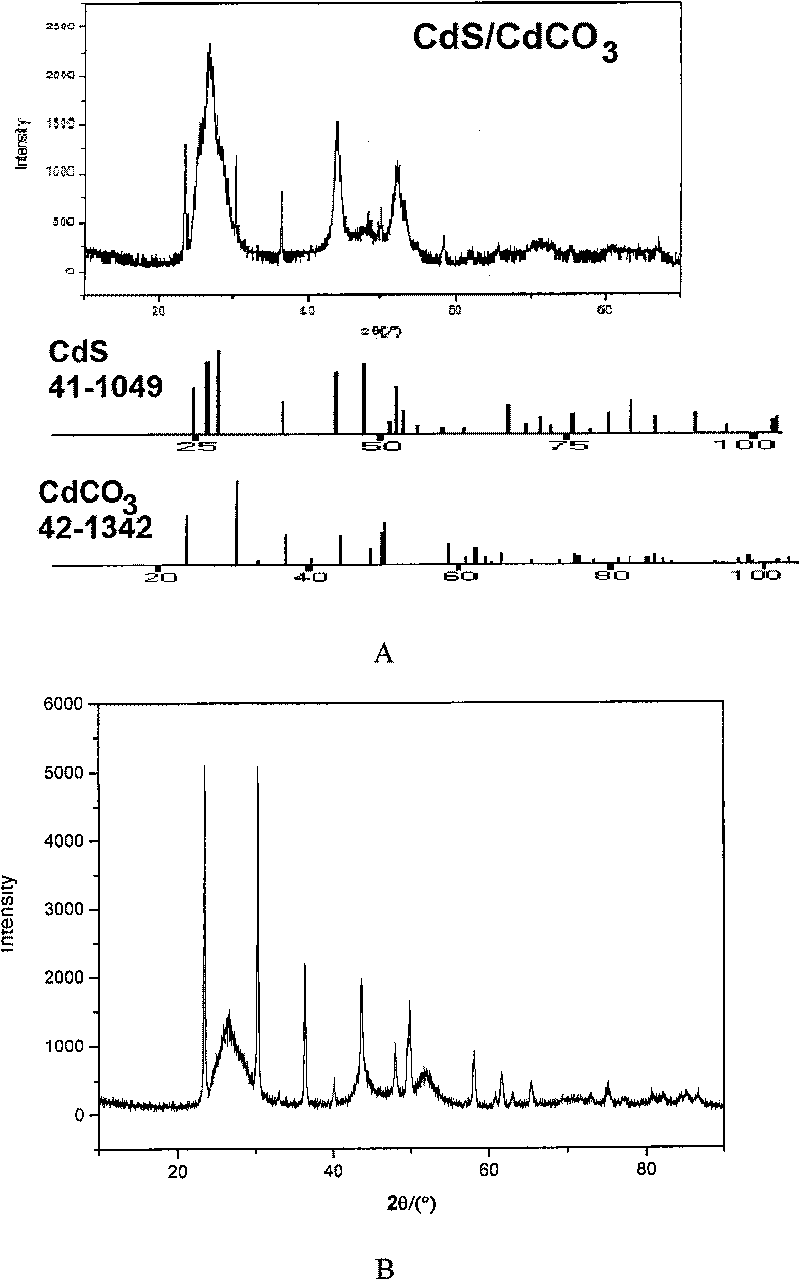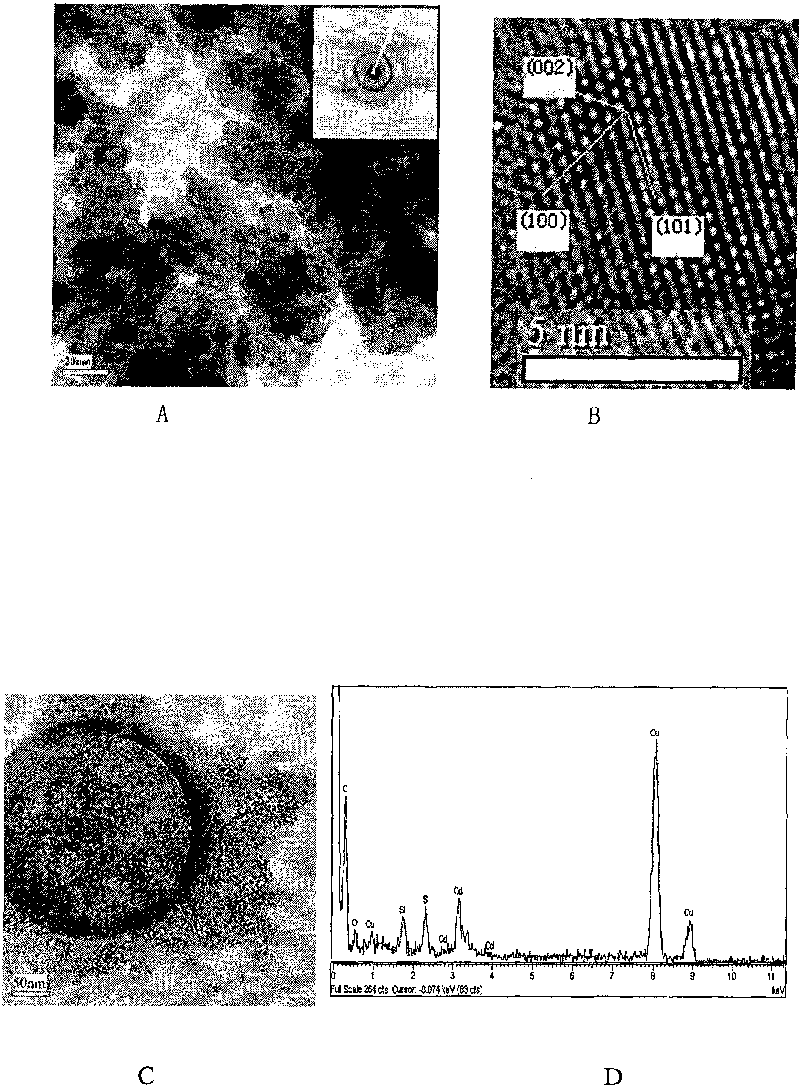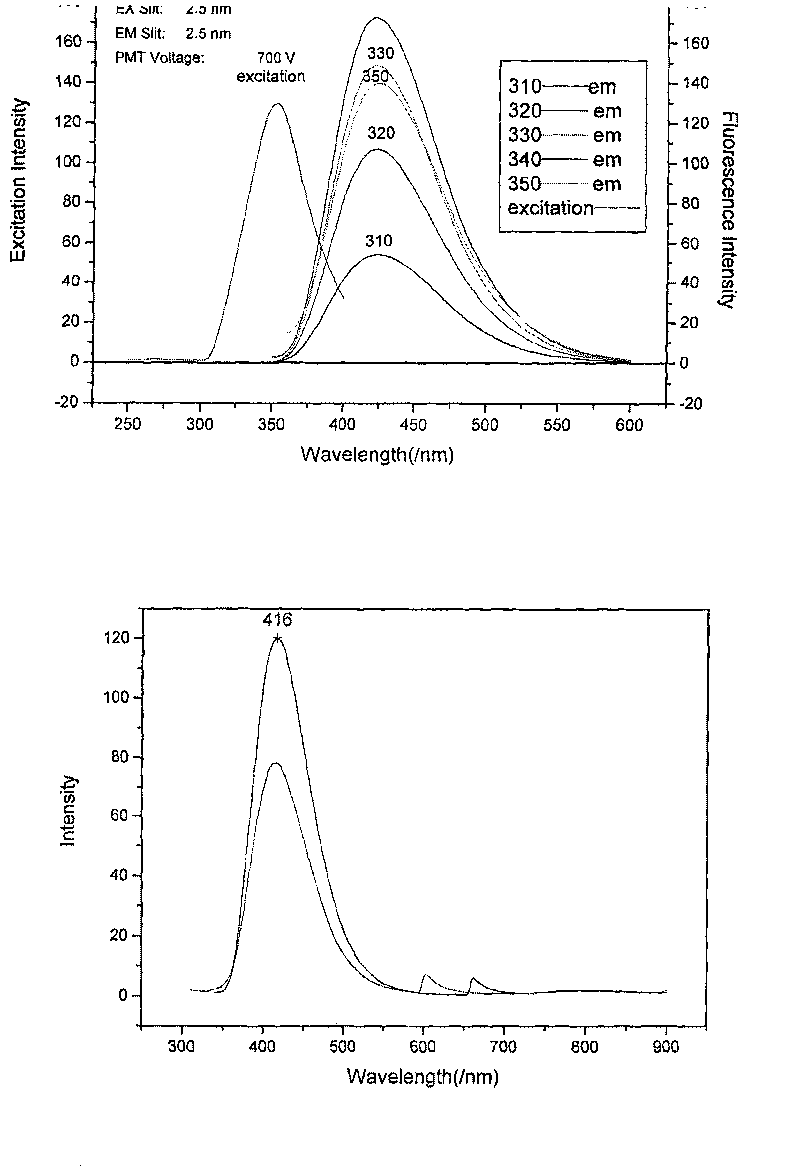Nano-crystal with core-shell structure and preparation method thereof
A core-shell structure, nanocrystalline technology, applied in the field of nanomaterials, can solve the problems of semiconductor nanoparticles losing practical application value, not revealing relevant data or maps, unable to know cadmium sulfide quantum dots, etc., to avoid toxicity and high cost. , The effect of good fluorescence emission peak shape and easy operation
- Summary
- Abstract
- Description
- Claims
- Application Information
AI Technical Summary
Problems solved by technology
Method used
Image
Examples
Embodiment 1
[0027] Measure 0.05 (mol / L) cadmium acetate 60ml and 0.05 (mol / L) L-cysteine 50ml according to the ratio of 1.2 and mix them in the autoclave liner (the concentration of cadmium acetate in the reaction system is 27mmol / L, the reaction concentration of L-cysteine is 22.5mmol / L), and be 1mol / L potassium hydroxide solution to regulate the acidity and alkalinity of solution with concentration, make it pH be 11. The autoclave was sealed, heated and pressurized to 130° C., and magnetically stirred. The high temperature stage is kept warm for 7 hours. After cooling down naturally and ensuring that the pressure in the autoclave drops to normal pressure, open the lid of the autoclave, transfer the materials in the autoclave to a ground bottle, and store in the dark. Obtained product characterization data: atomic force microscope (AFM) photos and fluorescence emission spectra are shown in figure 2 As shown, the size of the cadmium sulfide quantum dot is about 6.6nm, the λmax is ...
Embodiment 2
[0029] Measure 70ml of 0.05 (mol / L) cadmium acetate and 50ml of 0.05 (mol / L) L-cysteine according to the ratio of Cd / S of 1.4 and mix them in the liner of the autoclave (the concentration of cadmium acetate in the reaction system is 27.2 mmol / L, the reaction concentration of L-cysteine is 22.7mmol / L), and with a concentration of 1mol / L potassium hydroxide solution, the pH is adjusted to be 10. The autoclave was sealed, heated and pressurized to 110° C., and magnetically stirred. Keep warm for 5 hours in the high temperature stage. After cooling down naturally and ensuring that the pressure in the autoclave drops to normal pressure, open the lid of the autoclave, transfer the materials in the autoclave to a ground bottle, and store in the dark. Its X-ray powder crystal diffraction (XRD) pattern is as follows figure 1 As shown, two sets of crystal parameters are found in the figure: the XRD spectrum of the hexagonal structure of cadmium cadmium (Greenockite) and the XRD sp...
Embodiment 3
[0031] Measure 0.1 (mol / L) cadmium acetate 65ml and 0.1 (mol / L) L-cysteine 50ml according to the ratio of 1.3 and mix them in the autoclave liner (the concentration of cadmium acetate in the reaction system is 54mol / L, the reaction concentration of L-cysteine is 45mmol / L), and be 12 with concentration be 1mol / L potassium hydroxide solution regulation solution pH. The autoclave was sealed, heated to 130° C. with magnetic stirring, and kept warm for 6 hours. After cooling down naturally and ensuring that the pressure in the autoclave drops to normal pressure, open the lid of the autoclave, transfer the materials in the autoclave to a ground bottle, and store in the dark. Its fluorescence excitation and emission spectra are shown in Figure 4 .
PUM
| Property | Measurement | Unit |
|---|---|---|
| size | aaaaa | aaaaa |
| size | aaaaa | aaaaa |
| size | aaaaa | aaaaa |
Abstract
Description
Claims
Application Information
 Login to View More
Login to View More - R&D
- Intellectual Property
- Life Sciences
- Materials
- Tech Scout
- Unparalleled Data Quality
- Higher Quality Content
- 60% Fewer Hallucinations
Browse by: Latest US Patents, China's latest patents, Technical Efficacy Thesaurus, Application Domain, Technology Topic, Popular Technical Reports.
© 2025 PatSnap. All rights reserved.Legal|Privacy policy|Modern Slavery Act Transparency Statement|Sitemap|About US| Contact US: help@patsnap.com



